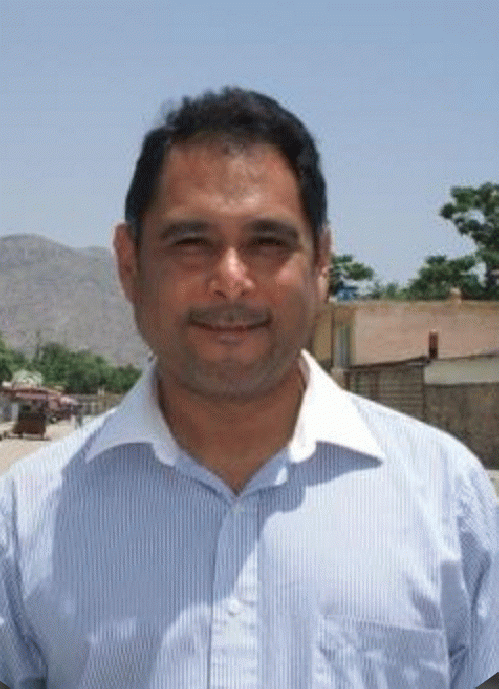My guest today is Ralph Lopez, who writes for OpEdNews and other political websites, is an activist for election integrity, and author of Peace Moon Over Afghanistan .
Joan Brunwasser: Welcome to OpEdNews, Ralph. You posted an interesting political article recently: Ocasio-Cortez Primary Upset in New York Shows Wisdom of State's Voting System, No Matter What Party You Are In. There's a lot to talk about but our readers may need a bit of background before we jump in. Who is Alexandria Ocasio-Cortez and what's so special about her?
Ralph Lopez: Hi, Joan, happy to be here. Alexandria Ocasio-Cortez is a 28 year-old community activist who just threw Washington into a tizzy by unseating Joe Crowley, a powerful, 10-term incumbent in a Democratic primary, and a strong candidate for next Speaker of the House. This shouldn't be unusual, but it is. Entrenched incumbents of either party get primary challenges all the time but they never seem to go anywhere. Why?
Many election transparency activists, of which I am one, feel that a number of factors came into play, and the most important of these was that a way has been found to keep the vote counting honest, at least with the kind of vote-counting machines that are in use across the entire state of New York.
JB: What's so different about New York, Ralph? What have they been able to accomplish that other states have not?
RL: Good question. It turns out that New York, and many other states, use a kind of vote counting machine that takes a picture - a digital image - of each paper ballot as it is fed into the machine. This allows citizens later to count the votes for themselves, after these images are posted online, or burned onto a DVD or some other accessible medium. In Alexandria's race, there was a very real danger that the vote-count could be hacked, and no one would ever find out. With the ballot images out there, people could find out. Ironically, activists like myself have been trying to get access to these images for the past two years since the 2016 presidential election, and election departments don't seem to want to cooperate. So what are they hiding?
In Arizona, in Ohio, in Alabama, election departments have balked at releasing the ballot images. That tells me we're on the right track. And we are. In Florida just this year, in a primary between a Bernie Sanders-type reformer and the incumbent, Hillary Clinton protege Representative Debbie Wasserman-Schultz, Schultz won, but the results were fishy. So what does the Broward County election department do when the loser, Tim Canova, sues to examine the paper ballots? They destroy the ballots*. The fact is we now don't know who in Congress really belongs there. Was really elected. Or put in by the powers that be. We have a case of the establishment perpetuating itself.
JB: I read about Canova's case. And, as in other, similar cases, absolutely nothing happens to the officials who wantonly destroy ballots and any other evidence. What does that say about our current system? Let's circle back to Alexandria's race for a moment. Were the digital images actually available to be scrutinized? We know in the past, that although we have paper ballots, there continue to be many obstacles to accessing them, let alone counting them. Please tell us more.
RL: The images of the ballots were not posted, but they would have been subject to a Freedom of Information Act Request, had Alexandria lost and suspicious patterns been found in the voting data, as it was in Tim Canova's race. That's what triggered Tim's lawsuit to view the paper ballots, before Broward County Election Supervisor Brenda Snipes illegally destroyed them. I think the threat of citizens demanding to see the digital images was enough to keep Alexandria's election honest - just my opinion. Election activists have been fighting and winning court battles over the right to view these images, in states like Arizona and Alabama, so election officials are now aware that "we the people" are aware of the images.
And you are exactly right, election officials can raise all kinds of obstacles to people accessing the paper ballots, mishandling by untrained citizens, the cost of overtime for election workers to conduct hand recounts. But with the digital images, they don't have a leg to stand on. There is no good reason to hide these unless you are doing something wrong. That's why we think a movement to have these images publicly posted after each election could usher in a revolutionary new era in election transparency, and we'd see fresh faces in Congress as a result of honest, transparent vote-counting. Tim Canova's race ripped the lid off the dirty little secret to how some of these incumbents stay in power. They cheat.
JB: This line of thought begets many questions. Which types of voting machines generate digital images? How common are they? Which states use them? And how does it work exactly? If I vote anonymously, as we all do, how can I know that the digital image/s represent my actual vote? I'm assuming that's not what this is all about. Can you give us a brief tutorial, so we can better grasp this important concept?
RL: Approximately half of all US voting jurisdictions already use the kind of machines which generate digital images of voter hand-marked paper ballots, but only Maryland and New York have them in use across the board, in every part of the state. Voter hand-marked paper ballots are absolutely superior to any other voting system, because the way each voter fills in the bubbles is unique, especially at the microscopic pixel level. It's like a signature, everyone's hand-mark is slightly different.
The way it works is, after you have filled in the bubbles for your choices with the Sharpie, and you feed it into that slot that sucks the ballot in, and at that moment, in a fraction of a second, the machine takes a digital image of that ballot, and a random number is printed across the bottom of the ballot that matches the number assigned to the image. It's like an office scanner but much faster. Now you have the permanent record of the anonymous ballot, and a high resolution image of that ballot. The ballot images can be posted online for people to count for themselves. The makers of these machines have been touting this feature as a way of auditing the vote count, without touching the paper ballots. If something comes up off-total, then you know the counting software is faulty, or might have been hacked.
The real count in any election is what the paper ballots say, not what the machine says. If a total is off, that's when it's time to access the paper ballots and do a hand-count. As it stands, accessing the paper ballots after an election anywhere is nearly impossible, and requires a judge's order, and judges are part of the system too. Look at the trouble Jill Stein had getting hand counts of the paper ballots in key states in the 2016 election, even when she could raise $7 million to pay for them. Even then, they didn't get a full hand recount of every precinct.
What is really frightening is that some states are now considering moving to machines by which votes are recorded through a touch-screen device. That's okay for persons with a disability that prevents them from hand-marking a paper ballot, and there aren't many of these votes. But to use them as a general rule is two steps backwards. Any touch screen device can be hacked to make the vote count come up whatever you want, and you don't have the dual record of the unique, hand-marked paper ballot and its image to put the lie to the hacked count.
(Note: You can view every article as one long page if you sign up as an Advocate Member, or higher).






